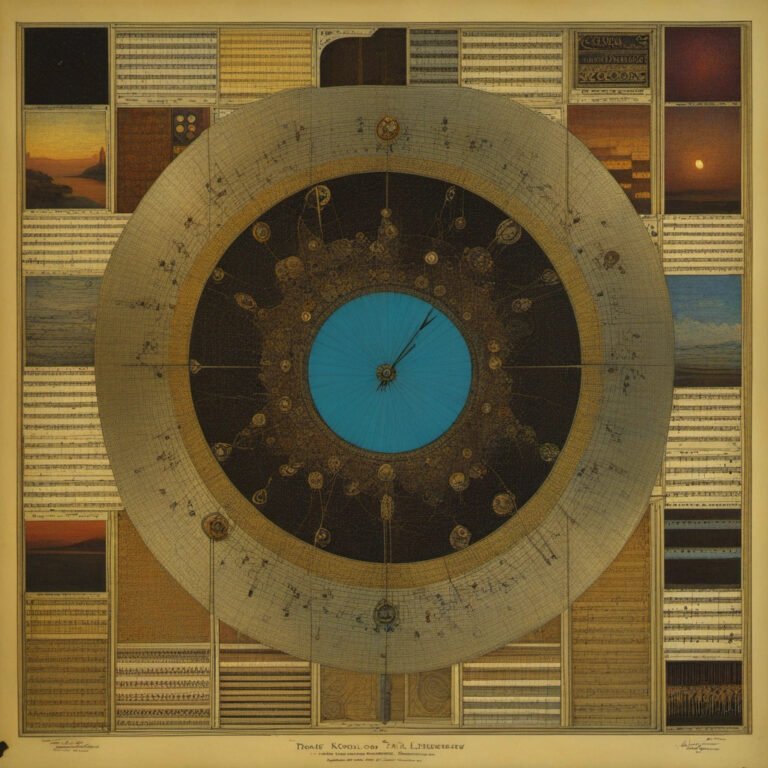I have some time to kill so I thought I would write a brief overview of the concept of time signature in response to some questions that arose recently from non-musicians.
Just a word, this post was originally submitted to a long-ago fan club email list for an older musician, hence many uses of music from the '60s and '70s as examples, most especially The Beatles, who often kept things both simple enough to be clear, but interesting enough to be useful and well-known examples. That's just how it is.
PART 1: A Young Person's Guide To Common Time Signatures, and what they mean in real life
Ok. When you listen to a song, it has a beat. This is what you tap your feet to, or maybe drum your fingers on a desk.
The most common beat in rock and roll might be written something like this. "boom-boom-BOMP-bum, boom-boom-BOMP-bum, boom-boom-BOMP-bum". Tap your fingers to the the rhythm of the music in "Jet Airliner" by Steve Miller, or listen to the drum beat of "Back In The USSR" or the title track of "Sgt. Peppers". There is an especially clear example at the beginning of "Freedom Of Choice" by Devo. It drives "Paranoid" by Sabbath, as well as almost everything else they ever recorded. It's a very common rhythm.
This beat is in "4/4 time". In this email, I am only going to discuss what the first number in a time signature means - 3/4, 4/4, 5/4 - because what the the numbers after the slash mean is less audible and more technical in nature (and are tricky enough to have been the subject of much debate between myself and Dan Sonenberg, a music professor and composer and far more knowledgeable about music theory and history than me, yet nonetheless even he sometimes gets this technical point wrong in my opinion, as detailed further down in this post.) Sometimes in conversation, a song is referred to as simply "in 3" or "in 4", dispensing with the second number entirely.
Note, before we proceed, that throughout this post I use CAPS to indicate words or beats which are emphasized, or slightly louder or stronger than the rest. Also, my choices of "boom" or "bum" etc. are completely arbitrary and simply indicate my own interpretation of the sound. I could have written "...BOMP-boom" instead of "...BOMP-bum" above but I just think it's a less clear reproduction of the subjective feel of the beat.
So: "boom-boom-BOMP-bum, boom-boom-BOMP-bum, boom-boom-BOMP-bum" is in 4/4. This is because the base rhythm has four beats - boom, boom, BOMP, bum. Tapping your foot along with it, you tap four times before the basic "boom-boom-BOMP-bum" rhythm repeats itself.
An example of a song where a vocal line follows the 4/4 rhythm is "I Am The Walrus": "*I*-am-he-as, YOU-are-he-as, YOU-are-me-as, WE-are-all-to, GETH-er..." Now in 'Walrus' it's not exactly the same pattern of beats, it's more "BOMP-bum-bum-bum" instead of "boom-boom-BOMP-bum". But that doesn't matter. It's the length, the number of beats in a repetition we're concerned with, not which one of those beats happens to be the strong one. (A digression: In more modern terms, we saw a shift like this in rap music trends, in around 2018, by my reckoning, when Cardi B's "Bodak Yellow" became the first popular rap song to my knowledge to hit the first beat, like "BOOM-bap-boom-bap", rather than the third, "boom-boom-BAP-boom", as most rap songs had done almost since the beginning. It was followed a few months later by Donald Glover's brilliant and horrifying "This Is America", and I've noticed many more since then. But, again, this is a digression, as all that matters for time signature is how many beats there are in a rhythmic pattern before it repeats, not which of those beats are the strong ones.)
Now, songs in 3/4 follow the same scheme. They are formed of patterns that repeat every three beats. For instance, the classic examples of 3/4 rhythm are a waltz, "dum-DUM-DUM-dum-DUM-DUM", or the "OOM-pah-pah" rhythm of Bavarian drinking music: "OOM-pah-pah-OOM-pah-pah-THAT'S-how-it-GOES-pah-pah". Some pop music examples: The verse parts of "Lucy In The Sky With Diamonds", as someone suggested: "PIC-ture-your, SELF-on-a, BOAT-on-a-..." "SUD-den-ly, SOME-one-is, THERE-by-the...". Or Piano Man: "SING-us-a, SONG-you're-the, PYAN-o-man". Or especially, Manic Depression: "MAN-ic-de, PRESS-ion-is, CRUSH-ing-my-..." "MU-sic-sweet, MU-sic-i, WISH-i-could..." The rhythmic patters of these songs are all 3 beats to a repetition. "I Am The Walrus" is in 4/4, not in 3/4 because it goes "*I*-am-he-as, YOU-are-he-as, YOU-are-me-as, WE-are-all-to, GETH-er", not "*I*-am-he, AS-you-are, HE-as-you, ARE-me-and, WE-are-all, TO-geth-er"
By the way: "The Wreck of the Edmund Fitzgerald", "Piano Man", and the verse parts of "Rocky Raccoon" are all in 3, and, provided you expect the couple of odd extra measures tacked onto the instrumental breaks between the verses of "Edmund Fitzgerald", you can sing any one of them to the tune of any other. Demonstration (as always, please pardon my vocals):
I've done this at Karaoke to great response from the crowd.
Now, I'm going to make a small side excursion. You might notice that in many of the examples, I trailed off "..." in the middle of a line. That's because I only wanted to show sections of lyrics where all the words fall one syllable to a beat. Actually, there doesn't need to be one syllable to a beat, you could squeeze two syllables into the space of one beat, or you could have a beat go by with nothing at all in the vocal line. A longer excerpt of "Lucy" might read "PIC-ture-your, SELF-on-a, BOAT-on-a, RIVer-[nil]-with, TAN-ger-ine, TREES-[nil]-and, MARSH-mal-low, SKIES-[nil]-[nil]".The [nil] is a beat, you tap your foot there, even though there's no sung word on that beat. A word could potentially go there if John Lennon rose from the dead and began revising the song - he could change "TAN-ger-ine, TREES-[nil]-and, MARSH-mal-low, SKIES-[nil]-[nil]" to "TAN-ger-ine, TREES-un-der, MARSH-mal-low, ZEP-pel-ins" and it would work just fine. Also, the two syllables of "RIVer" in this longer excerpt are squeezed into the same beat, sung at twice the speed of the other syllables... you'd be singing it slightly wrong if you sang "SELF-on-a, BOAT-on-a, RIV-er-with", so the three syllables of "river with" fall as evenly timed as the three syllables of "boat on a". Tap your foot along with the song and you'll see what I mean.
BUT: Those variations don't matter. The rhythm of the song goes "DANT-dah-dah, DANT-dah-dah", all the way through. Three beats to a repetition = 3/4 time. I am only even complicating my explanation with this side excursion is because it's damn near impossible to think of songs where every single syllable of the lyrics always falls on a beat and every beat has a sung syllable on it.
With the understanding of the above variations, you may even be able to see how Robyn Hitchcock's "I Often Dream Of Trains" is in 3/4: "OFT-[nil]-ten, DREAM-[nil]-of, TRAINS-[nil]-when, I'M-[nil]-a, LONE-[nil]-[nil]", even though the sung melody doesn't go "DAH-dah-dah" itself, it generally goes "DAH-[pause]-dah". The song as a whole still does the repeating rhythmic pattern of 3 beats. (I left out the 'i' before 'often' because it's easier to grasp the pattern if you start on a strong beat.)
If you have trouble imagining any of these examples, try tapping your desk in a slow, constant, even rhythm - "tap-tap-tap-tap-tap-tap" - and reciting the lyric examples along with it, one hyphenated phrase per tap, saying aloud: "i OFT nil ten, DREAM nil of, TRAINS nil when, I'M nil a, LONE nil nil". Recite it evenly, without any attempt at emphasis, one syllable per tap, including saying 'nil' aloud, and you should hear what I mean.
OK. 2/4 time is marching music: "BOOMP-bah, BOOMP-bah, BOOMP-bah, BOOMP-bah". Only two beats to the pattern. Marching bands do it all the time. George M. Cohan's "You're A Grand Old Flag" is in 2/4, that's why it sounds like it does. I'm sure 2/4 been used in rock but I can't think of an example. Laibach has probably done it. Bob Dylan's "Subterranean Homesick Blues" is arguably in 2/4, although it's not a particularly clear example because of Dylan's congenital swagger.
5/4 is heard occasionally on the radio: "Living In The Past" by Jethro Tull, and, surprisingly, "Good Morning, Good Morning" on Sgt. Pepper*. Anyway, if you can pick out the repetitions of 5 beats in either of these songs, you have an excellent ear—there would be plenty of both "[nil]" and 'squeezed' extra syllables if I were to try and illustrate these songs using lyrical phrases. Another famous example also is Dave Brubeck's "Take 5", which has no lyrics whatsoever, but the 5 beat repetition exists nonetheless. So 5 is a bit more ephemeral.
Interestingly, when I was on the road back in the 90s, I met my friend, fellow musician Todd Jones, who has no web presence, in a youth hostel in Seattle, who claimed that none of his friends back in Tennessee could jam with him because he somehow naturally played in a rhythm nobody could follow, and which they all simply shrugged off as "Todd Time". I recognized it as 5/4, and was able to jam with him. 30 years later, we're still good friends.
If you give a listen to Tull's "Living In The Past" and then Brubeck's "Take 5" in quick successession, if you have any ear at all you should get a clear feel for how familiar-yet-strange 5 time is.
(*Music geek moment—as if this whole post isn't one: parenthetically, Pepper's was a great album for these things... generally, for a pop band, the Beatles, and John Lennon for a brief period around this time in particular, used some surprisingly sophisticated musical tricks under the hood. Long articles have been written about what goes on in "Strawberry Fields Forever", as I will touch on below. While I can't find his wonderful comments on that particular song right now, Conductor Leonard Bernstein was a fan.)
PART II: Something in discussing time signature which musicians take for granted implicitly, but that non-musicians do not know.
There's a shorthand involved with time signatures, particularly the 2/4, 3/4 and 4/4. Each of those time signatures is frequently (although not always) associated with certain types of music, which I have alluded to. 2/4 suggests marching music. 3/4 generally suggests waltz, German oom-pa bands or circus music. 4/4 is most rock, folk, and very nearly all hip-hop. This is a vast generalization, of course (except for the hip-hop comment); rock music occurs in all of the above and more, but I'm pretty certain, for instance, that there are few or no heavy metal tunes in 3/4. It's generally associated with music that's too perky and chirpy. Even "Piano Man" has that slight circus feel to it. This is why it's such a gas that Hendrix pulled off a rockin' tune in 3/4, without a hint of irony, with "Manic Depression". [NOTE: I will never stop arguing to my more musically literate friends that "Manic Depression" is actually in 6/8, but this is a minute technical difference that many musicians, including music professors and professional composers of my acquaintance, have argued me into the ground claiming that it does not even actually exist. "Beethoven," Dan told me, "would have said it's in 3/4." But Dan also claims the verse parts of Dolly Parton's "9 to 5" is in 4/4, when it's clearly in a righteous gospel 4/8. Anyway, Billy Joel says "Piano Man" is in 6/8, too. Take that, Dan.]
So there's a bit of a shorthand. Time signature is not just a technical thing, there's a whole school of associations that goes with certain time signatures in the musical mind, at least with regard to the 2/4, 3/4, and 4/4 time signatures that comprise the vast majority of western music. 5/4 is a little more vague; there's not really enough popular music written in 5/4 - and certainly no "cliche'd" 5/4 beats lodged in the collective unconscious - for most people to have a strong association with it. Although there are some strange people out there.
So when we discuss time signature, it's a "loaded" issue in a way, with musico-cultural associations at times, and once you become aware of it, it's a fundamental aspect of how you hear. Slow or moody songs in 3/4 like "Lucy" or IODOT are beautiful in a certain unique sort of way, because most ballads are in 4/4, and doing a good one in 3/4 tickles the musical ear on a certain, perhaps even subconscious, level. And a flat-out rocker like "Back In The USSR" is in four - "FLEW-in-from-mi, AM-i-beach-b, O-a-[nil]-[nil], C-[nil]-[nil]-[nil], DID-n't-get-to, SLEEP-last-[nil]-[nil], NIGHT-[nil]-[nil]-[nil]" - because it HAS to be, because flat-out "good old-fashioned rock'n'roll" is in four. It doesn't sound like that, doesn't suggest that "beach boys"-type vibe, if it isn't. (Of course, again, these are generalities, I'm sure there are beach boys tunes in other time signatures. But not ones with the "classic" rock sound that "USSR" alludes to. For reference, AC/DC also usually stuck very identifiably with 4/4 time.) A heavy metal tune in 2 or 3 would get kudos in my book slightly higher than your generic 4/4 metal or even your highfalutin' 13/8 prog-metal, because technical issues aside, coming up with a metal tune in 2 or 3 is such a goofy idea to begin with. (I'm sure if such a song exists, somebody on this list will point it out.)
This is also why I am so gassed by "Strawberry Fields Forever", which changes time signature frequently, in some places changing every other bar. Because, while a lot of songs which either change time signature during instrumental breaks, or have an unusual time signature all the way through, it's unusual to have a pretty song that stays in 4/4 a lot of the time. but shifts and changes while the melody is still underway, and does it without seeming jarring or odd... if you don't listen for it, you won't even know it's there. I have no idea how you come up with that kind of stuff, and it increases my appreciation for the song. And it's at this point that I feel the technical aspects of music theory break down and reveal their limitations. To view Strawberry fields as going "4/4, 4/4, 2/4, 4/4, 4/4, 6/8" through subsequent bars (which it does!) is missing the point... that's a contrivance, and it exists solely on an intellectual level. The song goes how it goes, it wasn't created within that system, it's not weird, it just is what it is. It's like trying to fill the round hole of John Lennon with the square peg of objective rationale. (ouch!) Syd Barrett, founder of Pink Floyd, did a lot of this too as he progressively became unglued... he'd sometimes just let a single musical phrase play out until he was ready to move on from it, with no regard for metrical consistency at all. The conventions, so ingrained in the overwhelming majority of musicians that we live by them intuitively, just weren't a part of the picture for him.
But if you understand everything I've written here, you can still hear old songs in new ways, and find commonalities between popular musics that you hadn't heard before, even solely within the familiar 3/4 and 4/4 paradigm. Then, you can reexamine Rush for a while and get a feel for music in 7/4 (or 7/8 most likely, though as previously referred to that's a technical issue and beyond the scope of this discussion.) Soon you'll be tappin' away on your desk to your old Zappa records in 13/8, then you're throwin' on King Crimson's Three Of A Perfect Pair and flailing your hands away in 21/8 with one hand a beat and a half behind the other, and then your head explodes.


